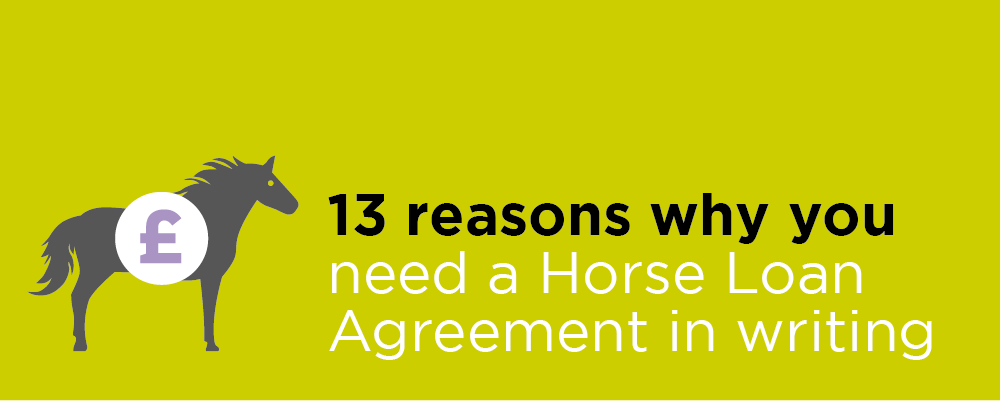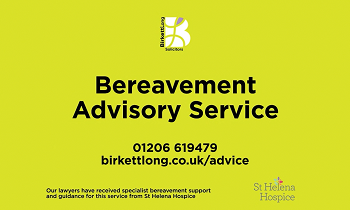- Basildon 01268244144
- Chelmsford 01245453800
- Colchester 01206217300
- London 020 4586 1280

The cost of living crisis has prompted many horse owners to consider loaning their horse out (in part or full) to have a level of financial assistance with the associated costs.
Whether the loan is short or long-term, to a friend or a stranger, having a clear and effective written loan agreement in place is paramount for both parties to understand their obligations and avoid the costs of litigation should their relationship turn sour.
Having personally experienced loaning a horse, I understand what is important to both the loaner and loanee when structuring a loan agreement. This article outlines some of the key points that the loaner and the loanee should consider within their loan agreement.
1 . Description
It is fundamental to ensure that the description of the horse leaves no room for ambiguity. The use of the horse’s name may not be enough, and the loan agreement should include further information such as the horse’s microchip number or any distinguishing features the horse may have.
2. Loan Period
The length of the loan period will determine when the loan terminates. The loaner may wish to include a trial period, a fixed term or an indefinite period until the termination clauses are triggered. Alternatively, the loaner may wish to include conditions that the loanee must meet for the loan to continue. This will provide a mechanism for the loaner to terminate the loan.
3. Termination
It is fundamental to consider how the loan agreement can be ended by either party. Both parties may be required to give a specific period of notice by serving a written notice. The logistics of the service of the written notice should also be considered.
The loaner may wish to include an automatic termination clause which is triggered after a trial period expires. In this instance, the parties may wish to include provisions for if the parties wish to continue the loan after the trial period has expired.
4. Location
The location of the horse will need to be negotiated between the parties. For example, whether the horse is to stay at its current livery yard or move to the loanees. The parties may wish to make provisions for if the livery yard closes down in the future.
5. Responsibilities and ownership
The responsibilities of each party should be made clear. If it is a part loan, there may be set days or a number of days per week when the loanee is responsible for the horse.
It should also be made clear that the ownership of the horse remains with the owner, albeit the loanee will have certain responsibilities for the horse and in some circumstances be in possession of the passport. Having a loan agreement in place provides evidence that the horse is strictly on loan and has not been gifted or sold to the loanee.
6. Cost
Parties should be certain about their obligations in relation to costs and when they need to be paid, whether it is a part loan or a full loan. Examples of some of the associated costs which should be considered are daily loan fees, livery fees, farrier fees and veterinary fees.
Provision may also be made in the event of default of payment and whether payment of interest will be required. The amount of money should be clear and upfront. Where there is a default on payment, clear guidelines should be featured for the borrower and lender. Such as if the borrower can accrue interest.
7. Insurance
It is sensible for both parties to have insurance in place. The level of insurance required by the loaner can be depicted within the loan agreement and should be agreed upfront.
8. Disputes
Although both parties commence their relationship without the intention of falling out, there is always a risk that the relationship between the parties may break down. The incorporation of an Alternative Dispute Resolution clause may avoid litigation costs should legal advice be sought to settle a dispute.
9. Damage
It is inevitable that there will be some ‘wear and tear’ whether that is to the horse’s tack, stable or other equipment but when damage surpasses the ‘wear and tear’ threshold, who will be liable to rectify the damage? This is something the parties should consider along with what circumstances does either party bear the costs of such damage or whether in some circumstances the parties are jointly liable.
10. Variation
A variation clause will allow for the parties to amend the loan agreement should their circumstances change or amend a clause that does not work or apply anymore. This allows for flexibility and is deemed as one of the ‘boiler plate’ clauses in most agreements.
11. Liability
The loaner will want to limit their liability and therefore will not want to take responsibility for any adverse incidents or injury caused at any time during the loan period. The loaner may also like to consider requesting that the loanee indemnify the loaner against any claims arising under the Animals Act 1971.
12. Loan with a view to buy
Loan with a view to buy or commonly abbreviated as ‘LWVTB’ arrangements are becoming increasingly popular for potential buyers to ensure the horse and potential new owner have a good working relationship before the sale and transfer of ownership of the horse takes place.
13. Get it in writing
It is far too easy for horse loans to be agreed upon verbally, over a few exchanged text messages or in response to an advert posted on a Facebook group. This may give rise to numerous issues due to the misunderstanding of the parties’ obligations. The solution is a horse loan agreement.
Should the relationship breakdown between the parties and legal advice is needed, one of the first questions that will be asked is “is there a written agreement?”. By having a written loan agreement in place, the parties can ensure that there is an agreed framework upon which their relationship is created and the associated risks of not having a written loan agreement are minimised.
For more information on the importance of having an agreement in writing, see Tracey Dickens’ article on ‘having a contract in writing: why you need one and why it’s a good investment’.
The above are just some of the factors to consider. If you have any queries or require assistance with equestrian loan agreements or any other equine-related matters, please contact me on 01245 453844 or at charlotte.burkert@birkettlong.co.uk.



Comments